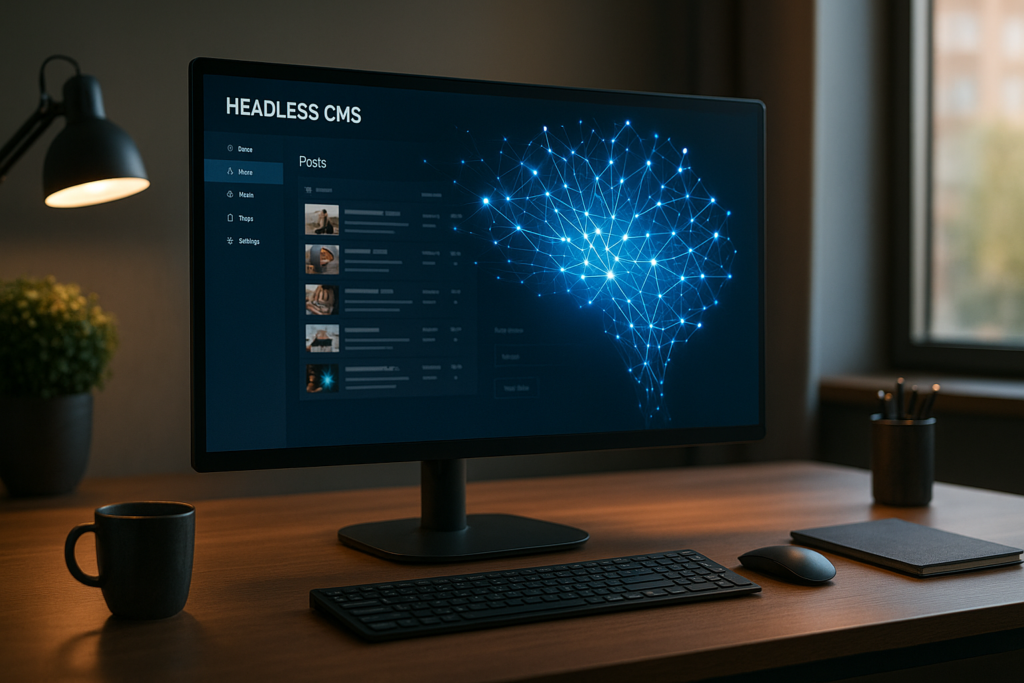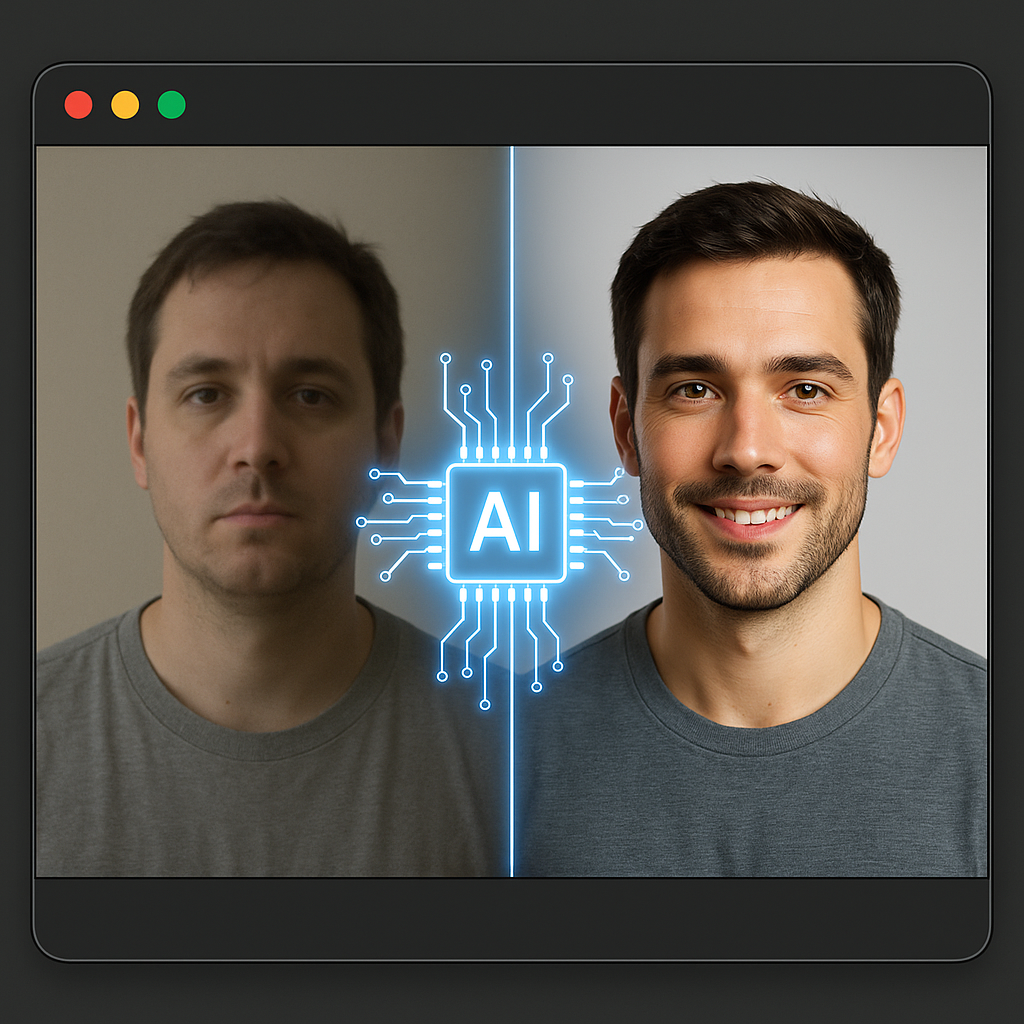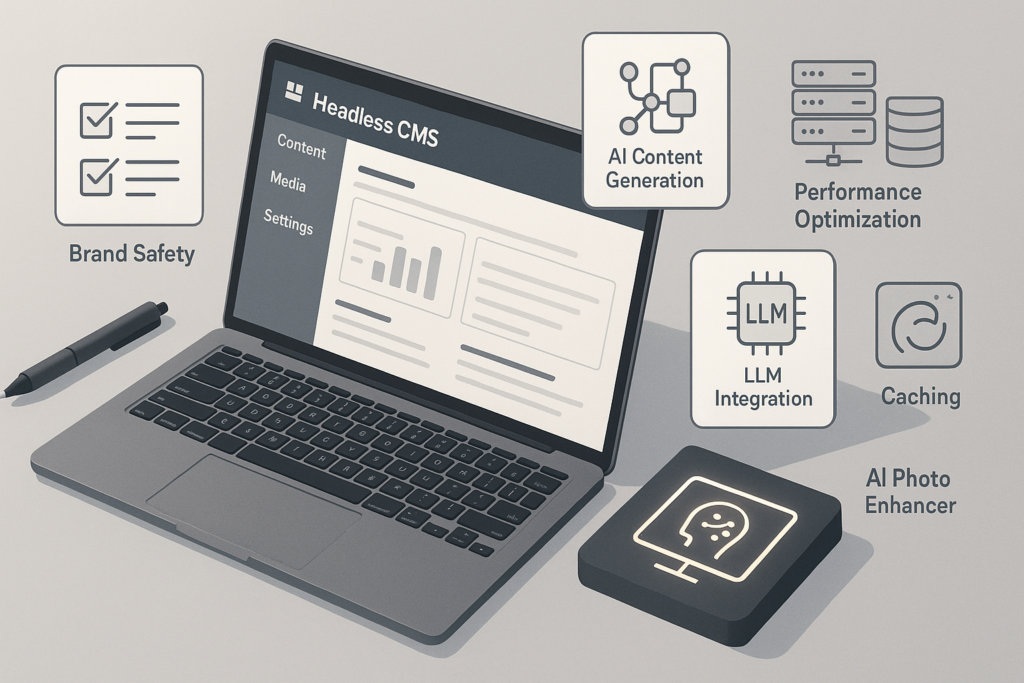Physical Address
304 North Cardinal St.
Dorchester Center, MA 02124
Physical Address
304 North Cardinal St.
Dorchester Center, MA 02124

Ever wondered how an ai photo enhancer and llm integration can completely transform your content workflow? In today’s fast-paced digital world, content teams are constantly looking for smarter ways to create, manage, and deliver content that feels fresh, personalized, and visually stunning. That’s where headless cms platforms combined with llms (large language models) step in to change the game.
Unlike traditional cms setups, a headless cms allows you to push content to any platform—your website, mobile app, or even IoT devices—through apis. When you add ai-powered tools like photo enhancers and llms, you unlock a whole new level of efficiency. You can automatically upscale images for crystal-clear visuals, generate metadata and summaries on the fly, and even personalize content for each reader segment.
The result? dynamic content marketing that not only saves your team hours but also drives engagement, improves seo, and keeps your audience coming back for more. Let’s explore nine powerful ways this tech duo can supercharge your content strategy.
If you’ve ever asked yourself what is headless cms, you’re not alone. The term can sound a little technical, but the concept is actually pretty simple — and game-changing. A headless cms is a content management system where the “head” (your website’s front end) is separated from the “body” (the backend where your content lives). This means your content isn’t tied to a single website layout. Instead, it’s stored in a way that allows you to deliver it anywhere — websites, apps, digital displays, and even voice assistants — all through flexible apis.
The biggest benefit of a headless cms is speed and flexibility. Your development team can build beautiful frontends while your content team works on posts, product pages, and images in the backend without stepping on each other’s toes. It’s perfect for omnichannel publishing and faster time-to-market.
Combine a headless api with ai-powered workflows, and you get the best of both worlds: automation, personalization, and consistency. Want inspiration? Check out headless cms examples and headless cms comparison guides to see how top brands are using this approach to scale their content in 2025.

Large language models, or LLMs, are smart systems trained on huge amounts of text. If you’ve ever wondered how do llm work, the answer is pretty fascinating. They learn patterns in language and use that knowledge to predict what word should come next. This makes them great at writing articles, summarizing long reports, or even answering questions. Tools like GPT, Claude, and Gemini are popular examples of llm integration in real-world workflows. When combined with a flexible setup like a headless cms, these models help content teams move faster without losing quality.
Good images can make or break your content. An ai photo enhancer or ai image enhancer can instantly improve image clarity, colors, and details. With an ai image upscaler, you can turn a small, blurry image into a crisp, professional one — perfect for blogs, product pages, or social posts. This keeps your visuals engaging and your brand looking polished.
Pairing ai content generation with headless cms examples gives your team a serious productivity boost. You can publish faster, create personalized experiences for different audiences, and make smarter decisions based on data. This approach delivers better ROI and helps you stay ahead in a competitive content marketing world.

When you combine an AI photo enhancer with LLMs inside a headless cms, you get a content engine that is faster, smarter, and more visually engaging. These tools work together to make your workflow smoother — from creating high-quality images to automating translations, improving accessibility, and personalizing experiences. Below are nine practical ways to use these technologies to transform your content strategy.
Visuals are the first thing readers notice, and a single poor-quality image can undermine your credibility. An AI photo enhancer transforms ordinary images into sharp, high-resolution visuals that stand out on any screen. By improving clarity, color, and detail, you ensure your content looks professional and polished. High-quality images are essential for blogs, e-commerce product listings, and landing pages, where first impressions drive clicks and conversions. Investing in better visuals leads to stronger engagement, improved trust, and higher audience retention. With AI tools, upgrading your images is quick, effortless, and delivers a noticeable boost to the overall impact of your content.
Pair it with an AI image upscaler, and you can breathe new life into old assets by increasing resolution without losing detail. Tools like Let’s Enhance, Topaz Gigapixel, or even Canva AI make this simple and accessible. If you’re on a budget, try free AI software to experiment before scaling up.
Manually writing summaries, meta descriptions, and social snippets for every piece of content can quickly become overwhelming — especially when you manage a large library of blog posts, product pages, and resources. This is where ai content generation shines. By connecting llms to your CMS, you can instantly generate TL;DR sections, article summaries, and SEO-friendly metadata that reflect the main points of your content. This keeps your messaging clear and consistent across multiple channels without requiring your team to spend hours editing each piece.
These tools are ai powered, which means they analyze your text, extract key themes, and create concise versions that are optimized for search engines. The result is content that is ready to publish, with metadata that improves click-through rates and search visibility. Automated summaries also make your content more user-friendly, helping readers quickly decide if an article is worth reading.
Reaching global audiences used to mean hiring translators and manually rewriting content in multiple languages. With llm artificial intelligence, you can generate localized versions of your blog posts, guides, and product descriptions in seconds. These models understand context, so translations sound natural and maintain your brand tone instead of sounding robotic.
Using llm embedding also allows you to personalize translations based on region, ensuring your content respects cultural nuances. This approach saves time and money while expanding your reach into new markets. It’s ideal for businesses with an international audience, giving them a scalable way to keep all users engaged with relevant, high-quality content that feels tailored to them.
Personalization is no longer optional — users expect it. With llms connected to your CMS, you can segment your audience and deliver personalized content based on behavior, location, or preferences. This type of dynamic content marketing makes users feel like your site was designed just for them, which increases engagement and conversions.
For example, a returning visitor might see tailored product recommendations, while a first-time reader sees beginner-friendly guides. Personalization doesn’t have to be complex — starting small with personalized CTAs or suggested reads can already improve user experience and keep readers coming back for more.
Metadata is one of the most important parts of any web page. Titles, meta descriptions, and image alt text tell search engines what your page is about and can make the difference between a click and a scroll-past. Writing these by hand for every page can be overwhelming, especially for large websites with hundreds of posts or product listings.
This is where automation can help. AI-powered tools can create unique, keyword-rich titles and descriptions for every page in your CMS, saving your team hours of manual work. Using an ai plagiarism checker ensures that each meta description is original and not copied from another source, while an ai writing detector can confirm that the tone is aligned with your brand voice. The result is clean, consistent metadata that improves your chances of ranking higher and attracting more visitors.
Accessibility is no longer optional — it’s a must-have for reaching the widest possible audience. Using ai programs free or paid, you can automatically create captions for videos, generate transcripts for podcasts, and write descriptive alt text for images. This not only helps users with hearing or vision impairments but also provides search engines with more text to index, boosting SEO.
Accessible content also leads to better user experience. Captions make videos watchable in sound-off environments, transcripts improve comprehension, and alt text helps readers using screen readers follow along. Adding accessibility with AI tools is a win-win — your site becomes more inclusive while gaining better visibility in search engines.
Publishing at scale means you need to be sure that every piece of content meets your brand and legal standards. Automated moderation with llm grounding helps you filter out anything inappropriate, off-brand, or potentially harmful before it goes live. This is especially useful for sites with user-generated content or large editorial teams where manual review might slow things down.
It’s also important to think about llm intellectual property issues. Using AI-generated content without proper checks could lead to accidental copyright misuse. Setting up clear rules, using automated scanning tools, and including a quick human review step ensures that you stay compliant while still enjoying the speed and creativity that AI brings. This combination allows you to take advantage of ai without restrictions but with smart safeguards.
One of the biggest advantages of AI is its ability to adapt on the fly. By combining embeddings with llms, your site can analyze user behavior in real time and show personalized product suggestions, related blog posts, or helpful resources instantly.
This turns your website into a dynamic experience that responds to each visitor. It’s the perfect example of what is dynamic content — always changing and relevant based on user interactions. These personalized recommendations keep readers engaged longer, encourage them to explore more pages, and often lead to higher conversions and better overall satisfaction.
Content creation is rarely a one-person job — it usually involves writers, editors, designers, and developers working together. This can quickly get messy if drafts are scattered across emails, documents, and chat threads. With llm-powered automation built into your CMS, you can reduce the back-and-forth and keep everything organized in one place. Repetitive tasks like tagging, formatting, and summarizing can be handled automatically, freeing your team to focus on creating high-quality content.
Modern platforms like Contentful, Strapi, and Sanity are excellent headless cms examples that integrate easily with AI tools. They allow everyone on your team to collaborate in real time — writers can draft, designers can upload images, and developers can push updates without stepping on each other’s toes. This improved workflow speeds up production, reduces errors, and ensures that your content is consistent across all channels.
Combining ai photo enhancer technology with LLM-powered workflows isn’t just about convenience — it’s about creating content that looks better, works harder, and performs consistently across every channel. Whether you want to improve SEO, reach global audiences, or simply save your team hours of manual work, these nine strategies offer a clear path forward. The best part is that you can start small, experiment with one or two methods, and scale up as you see results.AI

Getting started with AI tools can feel overwhelming, but with a few smart steps, you can make the process smooth and effective. The first step is choosing the right platform. Popular options like Contentful, Strapi, and Sanity are great headless cms examples because they are flexible and work well with modern AI tools. If you are new and wondering what is headless cms, it simply means a content system that lets you deliver your content anywhere through apis — perfect for connecting to AI services.
When using llm integration or ai content generation, keep an eye on cost control. Cache responses where possible so you don’t pay to generate the same result twice. You can also batch prompts to reduce the number of API calls and save money.
Brand safety should always be a priority. Add a human review step and use careful prompt engineering to make sure AI-generated content matches your voice and values.
Finally, focus on performance. Pre-generate content on the server side to reduce page load times and keep the experience smooth for users. If you are using visual tools like an ai photo enhancer, make sure images are optimized for the web before publishing. These small steps can help you build a reliable and scalable AI-powered workflow that works for both your team and your audience.
Getting started with AI for your content workflow doesn’t have to be complicated. If you want to level up your visuals, start with an ai photo enhancer. Tools like Canva AI, Fotor, and Topaz Labs let you improve image quality with a single click. You can remove noise, sharpen details, and even upscale old images to make them look fresh. This is perfect for blog banners, product images, and landing pages.
For llm integration, consider using trusted providers like OpenAI, Anthropic, or Google Gemini. These services let you add advanced ai content generation to your site, such as chatbots, automated summaries, and personalization engines.
If you are just learning what is headless cms, look into platforms like Contentful, Strapi, and Sanity. These headless cms examples work well with AI-powered workflows and are flexible enough to scale as your business grows.
Budget-conscious teams can try free AI software to experiment with text creation or a free AI video editor to make simple explainer videos. These free tools are great for testing ideas before committing to paid plans.
With these platforms in place, you can build a smart, scalable, and future-proof content system that saves time and keeps your audience engaged.
Bringing together an ai photo enhancer and llms inside your headless cms is one of the smartest moves you can make for your content strategy. This powerful combination helps you create content that is visually stunning, highly personalized, and optimized for every channel. From improving image quality and automating metadata to delivering real-time recommendations, these tools make your entire process faster and more efficient.
You don’t have to be a developer or AI expert to get started. Begin with simple steps like enhancing images or generating summaries, then slowly expand to multilingual content, automated personalization, and performance optimization. The beauty of this approach is that it grows with your needs — giving you the flexibility to scale your workflow as your audience and content library expand.
Now is the perfect time to experiment. Try out a few tools, test your results, and see how your engagement improves. Share your experiences, learn from your analytics, and keep refining your process.
For more tips, resources, and hands-on guides to using AI for content creation, visit icebergaicontent.com and start building a smarter content workflow today.
A headless cms is a content management system where the backend (where content is stored) is separated from the frontend (where content is displayed). This makes it flexible and allows developers to deliver the same content to multiple platforms — websites, mobile apps, and even IoT devices — through apis. If you are exploring headless cms examples, tools like Contentful, Strapi, and Sanity are popular choices.
LLMs, or large language models, connect to your CMS via api to assist with ai content generation. They can create summaries, FAQs, meta descriptions, and even entire articles based on prompts. This llm integration helps content teams work faster and focus on strategy while automating repetitive tasks.
An ai photo enhancer uses machine learning to automatically improve image quality. It can upscale images, sharpen blurry areas, fix lighting, and make visuals look professional. Combined with an ai image upscaler, you can repurpose old photos for new campaigns without losing quality.
Yes, AI can be a powerful ally for SEO. From generating optimized titles and meta descriptions to creating image alt text, AI improves content discoverability. It can also run plagiarism checks and ensure originality